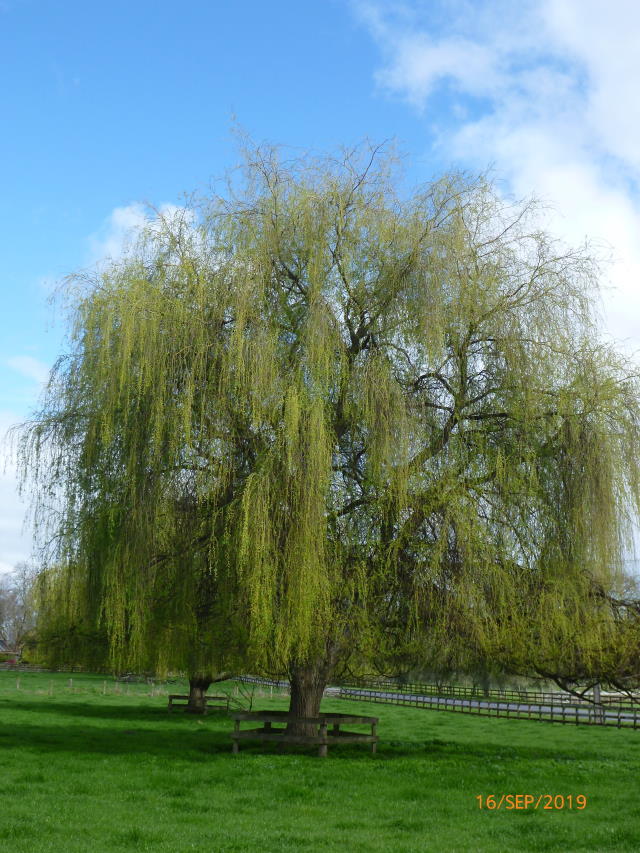
Weeping Willow (Salix babylonica and various cultivars)
Like the daffodil, the willow is a harbinger of spring. There are 450 species of willow, which are widespread across Europe. Since prehistoric times the long stems from pollarded willow have been used for weaving baskets, boat frames, fences and fish traps. The trees are used in Holland and Belgium as boundary markers, and as such often feature in the paintings of Rembrandt and van Gogh.
The weeping willow, although usually associated with water, actually originated from the dry northern regions of China. Cultivated for millennia in Asia, it spread along the Silk Road to Europe, and was introduced to England in 1730 from Aleppo in Syria. In 1736 it was named by the famous botanical taxonomist, Carl Linnaeus, who thought it was the tree referred to in the Bible, Psalm 137:
‘By the rivers of Babylon, there we sat down and wept when we remembered Zion; We hanged our harps upon the Willow in the midst thereof.’
In fact the trees of Babylon that grew along the Euphrates River were not willows but a ‘weeping’ poplar.
Despite this error the association remains between willows and sadness. In Europe in the Middle Ages a willow wreath indicated that the wearer was in mourning. Such gloomy connotations gradually also came to signify a lover’s rejection, and today in modern Dutch ‘to hang one’s cigarettes upon a willow’ means to give up smoking! In fact far from being the signifier of sorrow, the willow has been known since ancient times as an agent for the relief of pain and fever; in 400 BC Hippocrates prescribed willow bark for rheumatism. The bark contains salicin which is the drug used in modern aspirin tablets.

